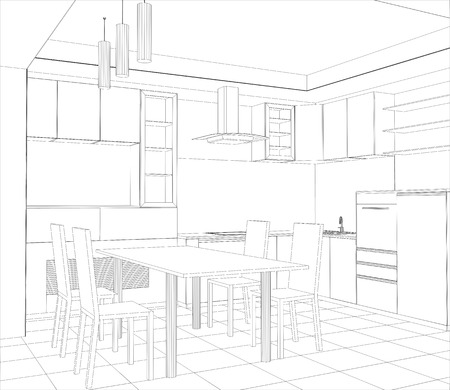Understanding the Unique Challenges of UK Bathrooms
When it comes to renovating small bathrooms in UK homes, homeowners are often faced with a distinct set of challenges rooted in the country’s architectural heritage. Many British properties, particularly Victorian and Edwardian terraces or older flats, feature compact bathroom spaces that were never intended for modern living standards. These historic layouts often come with awkward corners, chimney breasts, and boxed-in pipework, which can make reconfiguring the space quite tricky. In addition, plumbing constraints are common—water pipes and soil stacks are frequently fixed in place, limiting where you can relocate fixtures like toilets and basins without significant disruption. This means any renovation needs to be carefully planned to maximise every inch of available space while respecting the original structure. Understanding these unique spatial issues is the first step toward creating a functional and stylish bathroom that suits contemporary needs without compromising the character and integrity of your UK home.
2. Smart Layout Planning for Small Spaces
When it comes to renovating small bathrooms in UK homes, clever layout planning is crucial. The goal is to maximise every inch without compromising comfort or accessibility. Begin by evaluating the shape and size of your bathroom, noting where doors and windows are located. These fixed elements can impact your choices, as door swings may obstruct fixtures and windows may affect privacy or restrict wall space for fittings.
Key Strategies for Fixture Placement
- Door Swings: Opt for sliding or outward-opening doors to free up valuable internal space. Alternatively, consider pocket doors if wall structure allows.
- Window Positions: Place mirrors, vanities, or shelving below window height to maintain natural light while ensuring privacy with frosted glass or blinds.
- Movement Flow: Maintain a clear path from the entrance to the main fixtures – typically the basin, toilet, and shower or bath. Avoid crowding these elements together, which can make the room feel cramped.
Space-Efficient Fixture Arrangement Table
| Fixture | Recommended Placement | UK-Specific Tips |
|---|---|---|
| Basin | Opposite entry door or under window | Use corner basins for tight layouts |
| Toilet | Adjacent to basin, not directly facing door | Select short-projection models for narrow spaces |
| Shower/Bath | At room end or in alcove | Consider over-bath showers or quadrant enclosures |
Practical Movement Flow Tips
- Avoid placing fixtures so close together that knees or elbows hit walls or other units.
- If possible, allow at least 60cm clearance in front of toilets and basins for comfortable use.
- Check that cabinet and appliance doors open freely without blocking pathways.
A well-planned layout not only enhances visual appeal but also ensures your small UK bathroom remains functional and easy to clean. Thoughtful fixture placement and movement flow are key to achieving a practical renovation that stands the test of daily use.

3. Clever Storage Solutions
Efficient storage is essential for small bathrooms, particularly in the classic and compact layouts found throughout UK homes. Making the most of every available inch can transform a cramped space into a practical and inviting retreat. Here are some tailored recommendations for integrating clever storage solutions that complement British homestyles:
Built-In Shelves: Maximising Alcoves and Recesses
British bathrooms often feature alcoves or unused recesses, especially in Victorian or Edwardian terraced houses. Installing built-in shelves within these spaces creates valuable storage without encroaching on the limited floor area. Opt for moisture-resistant materials and consider open shelving to keep essentials within easy reach while adding a touch of character to your bathroom. Custom-built shelves above the bath or beside the shower can also provide handy spots for toiletries, towels, or decorative items.
Over-Toilet Cabinets: Utilising Vertical Space
The wall space above the toilet is often overlooked but offers prime real estate for smart storage. Over-toilet cabinets or shelving units are ideal for storing spare loo rolls, cleaning products, or personal care items discreetly out of sight. Choose cabinets that match your existing décor—whether it’s sleek and modern gloss finishes or traditional shaker-style doors—for a seamless integration with your home’s aesthetic. Soft-close hinges and slimline profiles ensure functionality without crowding the room.
Under-Sink Storage: Making Every Inch Count
Pedestal sinks are common in UK bathrooms but typically offer little in terms of storage. Swapping to a vanity unit with built-in under-sink cupboards or drawers provides ample space to stow away daily necessities like toothpaste, grooming tools, and spare soaps. For period properties, look for vanity units in muted colours or wood finishes that echo the era’s charm. Adjustable shelves inside can help organise items efficiently and prevent clutter from building up.
Smart Maintenance Tips
When installing new storage solutions, be sure to use moisture-proof fixings and regularly check for signs of dampness around built-in furniture—especially in older properties prone to condensation. Regularly wipe down surfaces and inspect seals to prolong the life of your cabinetry and maintain both function and appearance.
Summary
Clever use of built-in shelves, over-toilet cabinets, and under-sink storage not only enhances space efficiency but also preserves the distinctive character found in British homes. With careful planning and a focus on robust installation practices, even the smallest bathroom can be stylishly organised and easy to maintain.
4. Choosing Space-Efficient Fixtures
Making the most of a small UK bathroom often comes down to selecting the right fixtures that deliver both functionality and style without sacrificing precious space. Here’s a practical guide on choosing compact toilets, slimline basins, and walk-in showers that are ideal for tighter spaces commonly found in British homes.
Compact Toilets
When it comes to toilets, opting for a close-coupled or back-to-wall design can save vital centimetres. Wall-hung toilets are also increasingly popular in the UK, as they create a sense of openness by exposing more floor area and allowing easier cleaning. Dual-flush systems are recommended for water efficiency—an important consideration given rising utility costs.
Toilet Type Comparison
| Type | Space Requirement | Key Benefit |
|---|---|---|
| Close-Coupled | Low to Medium | Easy to install, classic look |
| Back-to-Wall | Low | Saves space, neat appearance |
| Wall-Hung | Lowest | Maximises floor area, modern finish |
Slimline Basins
Slimline basins are designed specifically for compact bathrooms. Corner basins or those with integrated storage can further enhance practicality. Look for models that fit snugly onto narrow countertops or even mount directly onto the wall. Avoid pedestal sinks if possible, as they consume more floor space than necessary.
Basin Options at a Glance
| Basin Type | Main Advantage |
|---|---|
| Corner Basin | Makes use of unused corners |
| Wall-Mounted Basin | Keeps floor clear, easy to clean underneath |
| Basin with Vanity Unit | Adds valuable storage space beneath sink |
Walk-In Showers for Small Spaces
A walk-in shower with a frameless glass screen is an excellent choice for small UK bathrooms, providing an open and airy feel. Opt for sliding doors over swinging ones to save even more room. Low-profile trays or wet-room-style floors further reduce trip hazards and maximise usable space.
Top Tips:
- Select fixtures with rounded edges to avoid bumps in narrow spaces.
- Choose lighter colours and reflective materials to enhance the sense of space.
- Pocket doors or bi-fold screens can be a smart alternative where swing space is limited.
- Always check measurements carefully before purchase to ensure a comfortable fit within your layout.
Selecting the right combination of compact fixtures will not only increase functionality but also add value and comfort to your home—a crucial factor in many British households where every square inch counts.
5. Using Light and Colour to Enhance Perceived Space
Small bathrooms in UK homes often feel cramped, but clever use of light and colour can visually expand even the tightest spaces. Start by choosing light, neutral paint shades such as soft whites, pale greys, or gentle pastels—these hues reflect more light and create an airy atmosphere. For those who prefer a touch of personality, consider subtle blues or sage greens; they lend calmness without overwhelming the room. When it comes to tiles, opt for glossy finishes and larger formats where possible. Large tiles reduce grout lines and make walls appear less cluttered, while reflective surfaces bounce natural and artificial light around the room. Diagonal or horizontal tile patterns can also trick the eye into perceiving greater width or length.
Lighting Choices That Make a Difference
Good lighting is essential in small bathrooms. Install layered lighting: start with bright ceiling fixtures—LED recessed lights are efficient and unobtrusive—and supplement with wall-mounted sconces beside or above the mirror to eliminate shadows. If your bathroom has a window, keep window treatments minimal to maximise daylight. For windowless rooms, consider daylight-mimicking bulbs to keep the space feeling fresh and open.
Mirrors: The Classic Enhancer
Incorporate large mirrors or mirrored cabinets to further amplify light and give the illusion of depth. Positioning mirrors opposite windows or light sources doubles their effectiveness. Choose frames that complement your décor without adding bulk.
Summary Tip
By thoughtfully selecting colours, tile patterns, and strategic lighting, you can transform even the smallest UK bathroom into a bright, welcoming space that feels significantly larger than its actual footprint.
6. Practical Maintenance and Upkeep
After investing time and resources into maximising your small bathroom, maintaining its fresh look and optimal function is crucial. Consistent upkeep not only preserves your renovation but also simplifies everyday cleaning tasks, ensuring your space remains inviting and hygienic.
Regular Cleaning Routines
For UK homes, hard water can quickly lead to limescale build-up, especially on taps, shower screens, and tiles. Use a mild, non-abrasive cleaner weekly to prevent residue and stains. Microfibre cloths are ideal for wiping down surfaces without scratching finishes. Dont forget to clean grout lines with a soft brush to stop mould growth, which can be more prevalent in smaller, less-ventilated spaces.
Protecting Fixtures and Fittings
To ensure the longevity of your newly fitted fixtures—be it chrome towel rails or compact vanity units—avoid harsh chemicals that can corrode surfaces. Instead, opt for white vinegar solutions or specialised bathroom products suitable for British plumbing standards. Regularly check for leaks under sinks and around the base of toilets; addressing minor drips early prevents water damage in confined areas.
Ventilation Matters
Proper ventilation is essential in the UK’s damp climate. Run extractor fans during and after showers to reduce condensation, which contributes to mould and mildew. If possible, open windows briefly each day to allow fresh air circulation.
Smart Storage Solutions
Keep clutter at bay by using wall-mounted shelves or mirrored cabinets—this not only saves precious floor space but also simplifies dusting and cleaning. Baskets or drawer organisers help manage toiletries, making it easier to wipe down surfaces quickly.
Seasonal Checks
Every few months, inspect silicone seals around baths and showers for signs of wear or mould. Re-seal if necessary to maintain waterproofing. Also, descale showerheads regularly to prevent blockages—a common issue in many UK regions.
Conclusion: Sustainable Care Pays Off
A well-maintained small bathroom stands the test of time. By incorporating these practical maintenance tips into your routine, you safeguard your investment while ensuring your compact space stays functional, sparkling clean, and comfortable for years to come.

